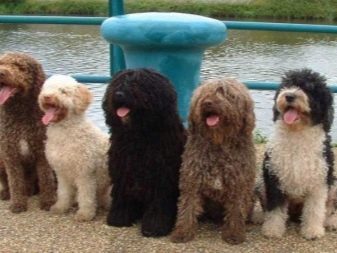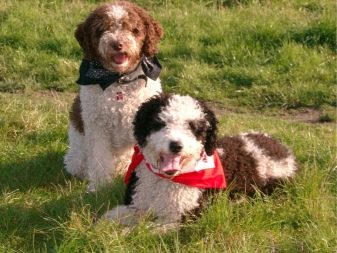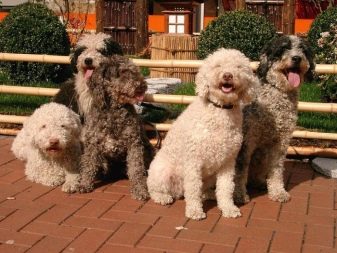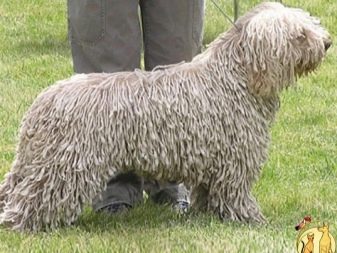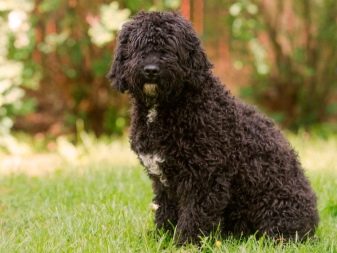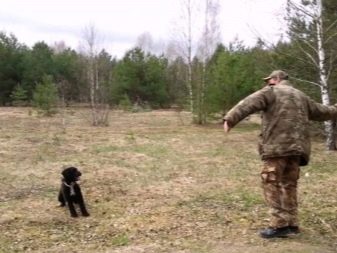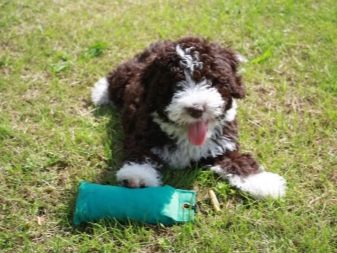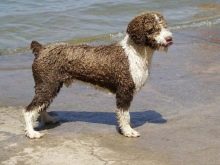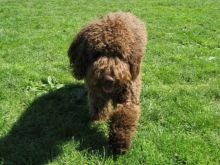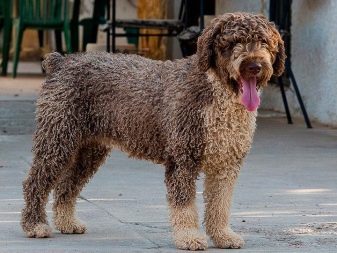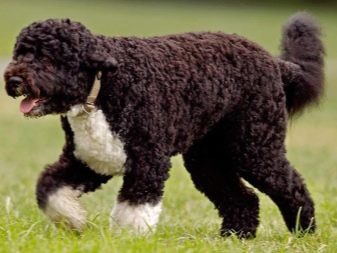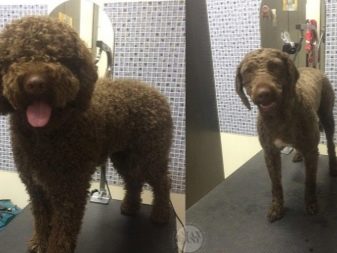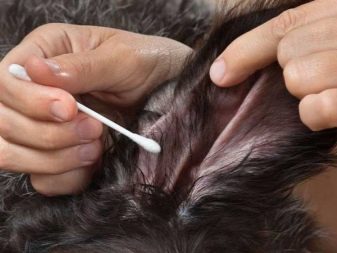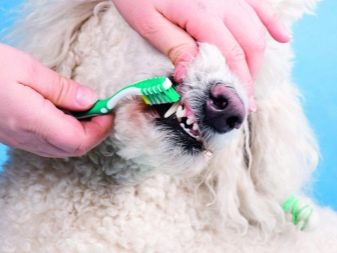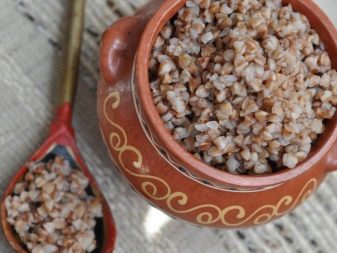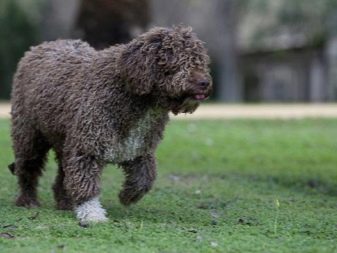Choosing a pet, especially a dog, is a crucial decision, because this animal will be with you and your children for at least 10 years. Therefore, it is worth considering the description of such a breed as the Spanish water dog, as well as familiarize yourself with the rules of keeping these animals and the peculiarities of their nature.
Story
The first mentions of this breed in Spanish sources are dated 1110. It is not known for certain exactly how these dogs originally came to the territory of Spain, but the two most popular versions say that they either came to the Iberian Peninsula from North Africa together with the Moors conquerors in the 8th century, or were imported by merchants from the territory of modern Turkey. In Spain itself, this breed has long been called the "Turkish dog." These animals have long been indispensable assistants to the peasants and were used primarily for grazing. Other classes were not alien to them either - many of them were trained to help fishermen in pulling nets out of the water and even for hunting, where they were used to pick up dead game.
Over time, water-borne rocks were gradually forced out of the pastures by shepherd dogs of the German and Belgian varieties. By the beginning of the last century, isolated populations remained only in northern Spain (Asturias and Cantabria), as well as in western and southern Andalusia. Only in 1973, “Perro de Aqua Espanyol” (as the name of this breed sounds in Spanish) attracted the attention of professional breeders who were engaged in its breeding and the formation of standards. Finally, In 1992, the standard of this breed was recognized by the International Canine Federation at number 336.
Spanish aquatic is considered to be the ancestor of all currently known breeds of water dogs, including the Portuguese one.
Appearance
According to the breed standard, its purebred representatives have certain external features.
- Curly Wool, which with age begins to twist into a cord. Color should be white, black or brown. White, black or brown spots are allowed on the wool.
- Height at withers should be from 40 to 50 cm for adult males and from 38 to 45 cm for adult females. The weight of males should be in the range of 16 to 20 kg, whereas for females this figure should be from 12 to 16 kg.
- Head should be massive with a flat skull shape and a pronounced transition from the muzzle to the forehead. The nose should be painted the same color as most of the animal's fur.
- Eyes should be of different shades of brown (from nut to dark brown) and be at a relatively large distance from each other.
- Ears must be trailing and have a triangular shape.
- The dog must possess wide and deep breasts with bulging ribs. The back should be almost straight with a slightly sloping croup. The stomach of these animals should not bulge. The neck should be short, but rather muscular.
- Paws should be powerful, and the pads on them look like a cat.
If you want your dog to be allowed to the show, then it needs to stop the tail (at the level II or III of the caudal vertebra). Also for show dogs no decorative haircuts are allowed.
Animal temper
Properly educated representatives of the Spanish water breed differ in affectionate and friendly character, which they manifest not only to the owner, but also to the rest of his family.Even to strangers, these pets, instead of aggression, show only caution.
At the same time, the dog has an independent temper, so it is very important to start training it as soon as possible, otherwise it can grow self-willed and uncontrollable.
These animals are strongly attached to the owner and do not tolerate separation to them. In addition, they feel the need for constant activity and rarely sit in one place. This is especially true of puppies, which can be given to games almost all day.
The very name of this breed hints at their love for water procedures. Seeing the pond, the animal will happily rush to it, even if it is a small puddle. So that in rainy weather it is worth walking the "Spaniards" on a leash.
Health
Despite a fairly good level of health and resistance to most diseases, this breed has several characteristic diseases which, moreover, can be transmitted to offspring, namely:
- eye diseases - glaucoma, progressive atrophy of the retina, cataracts, distichiasis (the appearance of additional rows of eyelashes);
- thyroid disease;
- hypoadrenocorticism (insufficient secretion of adrenaline and cortisol);
- pancreatic insufficiency;
- various allergies;
- dysplasia (developmental disorder) of the hip joints.
Therefore, the pet should be regularly examined at the veterinarian, and special attention should be paid to the organs of vision and the endocrine system during the examinations, since these systems are the least stable in Spanish water dogs.
Despite these dogs' love of swimming, it is important to ensure that they do not spend too much time in cold water, otherwise partial or complete hearing loss is possible.
At an early age puppies of this breed are often injured, so the owners should limit the level of their activity, do not leave them alone for a long time.
The average life expectancy of these animals is from 10 to 14 years.
Care rules
Spanish water dogs are generally rather unpretentious. However, their energy and the need for physical activity determine the main requirement for the maintenance of the breed - compulsory walking in the morning and evening for at least an hour.
The main feature of the care of these animals - they do not need to comb. Their wool itself twists into curls and laces, and combing it will not only cause discomfort to the animal, but also spoil its appearance. Instead of combing, wool can be cut (but not more than 1 time per year). Grooming of these dogs is strictly optional and is mandatory only if you are going to take the pet with you on the hunt. During the haircut, please note that according to the breed standard, the length of the coat on the entire body of the animal should be the same.
And also it is not recommended to bathe these pets too often. Swimming is recommended only when the dog is very dirty. It is necessary to wash such dog in warm water using neutral shampoo for animals. Drying wool preferably in the open air.
Vulnerable places of this breed are the ears and eyes, so it is important to clean them regularly. Cleaning the ears is carried out at least 1 time per week using cotton swabs that can be moistened with saline or veterinary lotion. It is necessary to wash the eyes of dogs at the first signs of inflammatory processes or their visible pollution. To do this, you can use gauze cloths or cotton pads moistened with water, saline or lotion.
It is important to wash the eyes with a warm liquid - a procedure performed with cold water can lead to the development of inflammation. Do not forget to periodically brush your pet's teeth.
Since, until the 70s of the last century, the breed was not considered as decorative and was used mainly in rural conditions, there are no special dietary requirements for Spanish dogs.It is important to adhere to the general recommendations for feeding dogs and include meat (not too fat, preferably boiled) in the diet, meat by-products (liver, heart, kidneys, stomachs), buckwheat or rice porridge, boiled vegetables, low-fat dairy products (cottage cheese or kefir). It will not be superfluous to include in the diet also sea fish, but no more than twice a week and always cleaned of bones.
Not prohibited and the use of dry feed, in particular, complete. Water in the drinking bowl is important to change at least 1 time per day.
Virtues
The main advantage of this pet is its friendliness in relation to both people and animals. Historically, these dogs have been accustomed to coexistence with sheep, goats and other domestic animals, so outbreaks of aggression towards another beast are practically not found among Spanish watermen.
Another advantage of this variety of dogs is that due to the relatively recent interest of professional breeders, this breed did not have time to lose its herding and hunting instincts, which means that it can be recommended to owners of farms and hunting grounds where it can fully demonstrate their skills.
Dogs of this breed do not shed, which has a good effect on the cleanliness of the house.
disadvantages
The main minus of the breed is natural energy and the need for regular physical activity. Walking with such a pet should be given more time (from two hours a day) than more calm dog breeds. Otherwise, the animal can be ugly at home, fall into depression and even get sick.
Another disadvantage of Spanish dogs - energetic and independent character, because of which a dog needs to spend a lot of time and carefully adjust its behavior, especially in the early stages of training. However, due to congenital peacefulness such a dog can not be used as a guard.
Despite good health, This breed is subject to a number of dangerous diseases that are important to identify in the early stages, otherwise their vision, hearing or endocrine system will be irreparably damaged. With a general simplicity in care, these dogs require constant monitoring of the condition of the ears and eyes.
Finally, the breed is not very common in Russia, so in order to acquire a purebred puppy, you will have to search for it for a long time (or order it in Spain), while laying out from $ 650 to $ 2,000.
For more on the features of the breed, see the following video.

